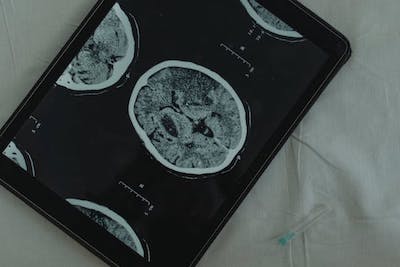The Practice of Compassion
Pema Chodron talks about compassion and says: “When we practice generating compassion, we can expect to experience our fear of pain....
 What does EMDR Stand for?
What does EMDR Stand for?EMDR stands for Eye Movement Desensitization and Reprocessing. It’s a psychotherapy treatment that was originally designed to alleviate the distress associated with traumatic memories.
Understanding EMDR Therapy: A Comprehensive Overview
EMDR therapy stands as an extensively researched and effective psychotherapy method that has demonstrated remarkable efficacy in aiding individuals in their recovery from trauma and various distressing life experiences. This therapeutic approach has been particularly beneficial for addressing conditions such as PTSD, anxiety, depression, and panic disorder.
One distinctive aspect of EMDR therapy is its departure from traditional talk therapy methods that often involve delving into intricate details of distressing events or assigning homework between sessions. Instead, EMDR therapy focuses on facilitating the brain’s innate healing processes without necessitating extensive discussion of emotions, thoughts, or behaviors related to the distressing issue.
So, how does EMDR therapy impact the brain? Our brains possess a natural mechanism for processing and recovering from traumatic memories and events. This process relies on effective communication among various brain regions, including the amygdala (responsible for signaling stress), the hippocampus (involved in learning and memory formation, including safety and danger cues), and the prefrontal cortex (responsible for regulating behavior and emotion).
While some traumatic experiences may naturally resolve over time, others may persist without proper processing. When distress from a traumatic event lingers, individuals may experience overwhelming emotions, intrusive thoughts, and a sense of being trapped in the past (“frozen in time”). EMDR therapy intervenes by facilitating the brain’s processing of these memories, enabling the resumption of normal healing processes.
Importantly, EMDR therapy does not erase or suppress traumatic memories. Instead, it enables individuals to remember the experience without triggering the intense fight, flight, or freeze response associated with the original event. Through EMDR therapy, individuals can achieve resolution and relief from the debilitating effects of trauma, fostering profound healing and restoration.
Individuals across various age groups and backgrounds can benefit from Eye Movement Desensitization and Reprocessing (EMDR) therapy. Here are some groups that may find EMDR particularly helpful:
Overall, EMDR therapy offers a versatile and effective approach to addressing a wide range of psychological difficulties stemming from past trauma or distressing life experiences.
Therapists utilize EMDR therapy to tackle a broad spectrum of challenges, including:
During an EMDR session, the client and therapist will collaborate through the 8 phases of EMDR together. Attention will be focused on a negative image, belief, and body feeling associated with the distressing event. Subsequently, the focus shifts to developing a positive belief that indicates resolution of the issue. A typical EMDR therapy session typically lasts from 60 to 90 minutes. EMDR therapy can be incorporated into a standard talking therapy, utilized as an adjunctive therapy with a separate therapist, or employed as a standalone treatment.
For EMDR services, feel free to contact us through our convenient contact form or by calling 561-408-1098. We provide both telehealth and in-person therapy sessions, offering flexibility to suit your preferences and convenience.
Pema Chodron talks about compassion and says: “When we practice generating compassion, we can expect to experience our fear of pain....
Grief is relentless, a beast of an emotion. We ask ourselves: “When will I stop feeling the pain?”...
So often and so easily we make “our message” and “our gift” about us. But it’s not about us....
The healing process can be challenging as we attempt to navigate our feelings and emotions. Our minds, bodies and spirits are tethered together and so when we heal, we heal all parts of ourselves at o...